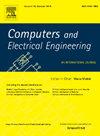Quantum blockchain for a greener tomorrow: A survey of emerging applications
IF 4
3区 计算机科学
Q1 COMPUTER SCIENCE, HARDWARE & ARCHITECTURE
引用次数: 0
Abstract
Climate change is one of the most critical challenges, requiring innovative solutions to strengthen environmental resilience. In this paper, we explore the potential of Quantum Blockchain Technology (QBT) as a novel approach to addressing climate change and fostering environmental sustainability. QBT merges the principles of quantum computing with the decentralized and secure nature of blockchain technology, offering promising avenues for revolutionizing various sectors, including energy, transportation, agriculture, and waste management. By harnessing the power of quantum mechanics and the transparency of blockchain, QBT presents opportunities for optimizing resource utilization, reducing carbon emissions, and promoting ecosystem preservation. This paper employs a Systematic Literature Review (SLR) process, covering the period from 2017 to 2024, to provide an in-depth analysis of existing literature and case studies. Through this methodical approach, we elucidate the theoretical foundations, technological advancements, and potential applications of QBT in mitigating climate change and enhancing environmental resilience. Furthermore, We discuss the applications, challenges, risks, and ethical considerations related to the adoption of QBT, along with its future prospects to ensure responsible deployment. Overall, this paper underscores the transformative potential of QBT in navigating the future towards a more sustainable and resilient world amidst the challenges posed by climate change.
量子区块链为更绿色的明天:新兴应用的调查
气候变化是最严峻的挑战之一,需要创新的解决方案来加强环境复原力。在本文中,我们探讨了量子区块链技术(QBT)作为应对气候变化和促进环境可持续发展的新方法的潜力。量子区块链技术将量子计算原理与区块链技术的去中心化和安全特性相结合,为能源、交通、农业和废物管理等各个领域的变革提供了大有可为的途径。通过利用量子力学的力量和区块链的透明度,QBT 为优化资源利用、减少碳排放和促进生态系统保护提供了机会。本文采用系统文献综述(SLR)流程,涵盖 2017 年至 2024 年,对现有文献和案例研究进行了深入分析。通过这种方法论,我们阐明了 QBT 在减缓气候变化和增强环境复原力方面的理论基础、技术进步和潜在应用。此外,我们还讨论了与采用 QBT 相关的应用、挑战、风险和伦理考虑,以及确保负责任部署的未来前景。总之,本文强调了在气候变化带来的挑战中,QBT 在引导未来走向一个更可持续和更具复原力的世界方面所具有的变革潜力。
本文章由计算机程序翻译,如有差异,请以英文原文为准。
求助全文
约1分钟内获得全文
求助全文
来源期刊

Computers & Electrical Engineering
工程技术-工程:电子与电气
CiteScore
9.20
自引率
7.00%
发文量
661
审稿时长
47 days
期刊介绍:
The impact of computers has nowhere been more revolutionary than in electrical engineering. The design, analysis, and operation of electrical and electronic systems are now dominated by computers, a transformation that has been motivated by the natural ease of interface between computers and electrical systems, and the promise of spectacular improvements in speed and efficiency.
Published since 1973, Computers & Electrical Engineering provides rapid publication of topical research into the integration of computer technology and computational techniques with electrical and electronic systems. The journal publishes papers featuring novel implementations of computers and computational techniques in areas like signal and image processing, high-performance computing, parallel processing, and communications. Special attention will be paid to papers describing innovative architectures, algorithms, and software tools.
 求助内容:
求助内容: 应助结果提醒方式:
应助结果提醒方式:


